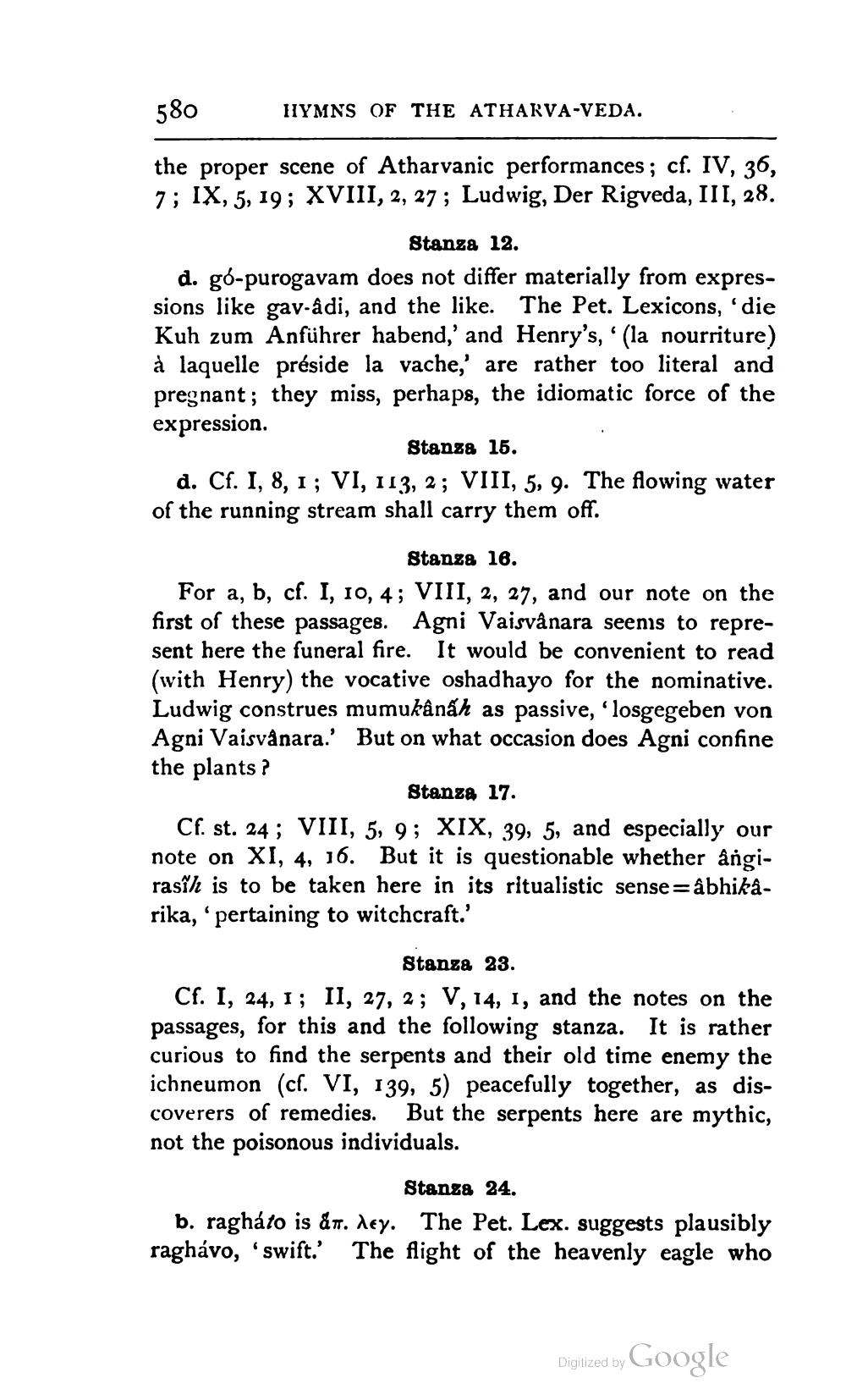________________
580
HYMNS OF THE ATHARVA-VEDA.
the proper scene of Atharvanic performances; cf. IV, 36, 7; IX, 5, 19; XVIII, 2, 27 ; Ludwig, Der Rigveda, III, 28.
Stanza 12. d. gó-purogavam does not differ materially from expressions like gav-adi, and the like. The Pet. Lexicons, die Kuh zum Anführer habend,' and Henry's, '(la nourriture) à laquelle préside la vache,' are rather too literal and pregnant; they miss, perhaps, the idiomatic force of the expression.
Stanza 15. d. Cf. I, 8, 1; VI, 113, 2; VIII, 5, 9. The flowing water of the running stream shall carry them off.
Stanza 18. For a, b, cf. I, 10, 4; VIII, 2, 27, and our note on the first of these passages. Agni Vaisvånara seems to represent here the funeral fire. It would be convenient to read (with Henry) the vocative oshadhayo for the nominative. Ludwig construes mumukânáh as passive, losgegeben von Agni Vaisvånara.' But on what occasion does Agni confine the plants ?
Stanza 17. Cf. st. 24; VIII, 5, 9; XIX, 39, 5, and especially our note on XI, 4, 16. But it is questionable whether angirasîh is to be taken here in its ritualistic sense=âbhikarika, 'pertaining to witchcraft.'
Stanza 23. Cf. I, 24, 1; II, 27, 2; V, 14, 1, and the notes on the passages, for this and the following stanza. It is rather curious to find the serpents and their old time enemy the ichneumon (cf. VI, 139, 5) peacefully together, as discoverers of remedies. But the serpents here are mythic, not the poisonous individuals.
Stanza 24. b. ragháto is år. dey. The Pet. Lex. suggests plausibly raghávo, swift.' The flight of the heavenly eagle who
Digized by Google




